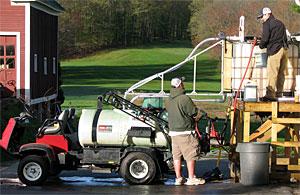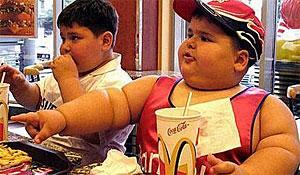You are what you eat…
Fundamental # 2: Eating Well
 Reflect for a moment on how much time we spend fine tuning our nutritional programs for our turf. We research the latest technologies, soil test, tissue test, and use complicated cocktails in an effort to dial in the exact needs of the plant. We spend a great deal of time, effort and money to build a nutritional foundation that will allow our turf to stand up the stress and rigors of the long golf season.
Reflect for a moment on how much time we spend fine tuning our nutritional programs for our turf. We research the latest technologies, soil test, tissue test, and use complicated cocktails in an effort to dial in the exact needs of the plant. We spend a great deal of time, effort and money to build a nutritional foundation that will allow our turf to stand up the stress and rigors of the long golf season.
Now, shift gears and think about how much effort you put into your own personal nutritional program. Have you ever given it much thought at all? What might happen if we spent even a fraction of the time and energy we use to feed our turf, and looked what we feed ourselves instead?
Most of us don't usually change things about our eating habits until something goes wrong. Things like diabetes, high cholesterol levels, or even food allergies force us to slow down and re-examine our food intake. It's only when we experience health problems that we are usually forced to take corrective measures and change our lifestyles in big ways.
Eating well can be a daunting task at the best of times. Search the ol' interbot and you will find no end of diets and eating styles that all promise to be the ticket for lifelong health. Gluten free, paleo, vegetarian, vegan, Mediterranean, raw food, organic, low carb, south beach?.the list is endless.
What is a super to do? Here are a few hints:
- Eat real food. Pretty simple, really. Just try to find food that doesn't have an ingredient list as long as the latest designer foliar spray (it can help to buy local; 'close to home' usually means higher nutritional value)
- Avoid processed foods. Stands to reason that if you are eating more real foods you will eat less styrofoam foods
- Reduce your sugar input. This one is tricky, as so much of the food we buy these days is laden with sugar. Again by sticking with real foods you lessen the amount. Just like turf has trouble dealing with a buildup of extra salts, our bodies have trouble dealing with all that extra sugar (and salts for that matter)
-
 Reduce your carbohydrate input. Again, our North American diet uses carbohydrates as a foundation for most of our meals. It is tough to think about not having your morning bagel or muffin, but reducing your intake can help (especially if the goal is to lose a few pounds)
Reduce your carbohydrate input. Again, our North American diet uses carbohydrates as a foundation for most of our meals. It is tough to think about not having your morning bagel or muffin, but reducing your intake can help (especially if the goal is to lose a few pounds) - Mind your portion size. Another North American (a little more emphasis on the 'American' -- sorry guys) dietary flaw we have gotten used to is huge portion sizes. If a restaurant serves you enough food for four people, it must be a good restaurant?right?
- Try not to get hungry. We are more liable to make poor food choices when we are really hungry. Keep good food on hand. Grocery shop for yourself (things like veggies, nuts, or fruit) and keep it in the lunchroom or small office fridge.
So before this season starts, take some time and tune into what types of fuel you stoke the old furnace with. If the bag of chips and five cups of coffee aren't getting you through the day, then maybe it's time to rethink the program a bit... before you have to start tissue testing.



 Reduce your carbohydrate input. Again, our North American diet uses carbohydrates as a foundation for most of our meals. It is tough to think about not having your morning bagel or muffin, but reducing your intake can help (especially if the goal is to lose a few pounds)
Reduce your carbohydrate input. Again, our North American diet uses carbohydrates as a foundation for most of our meals. It is tough to think about not having your morning bagel or muffin, but reducing your intake can help (especially if the goal is to lose a few pounds)
0 Comments
Recommended Comments
There are no comments to display.